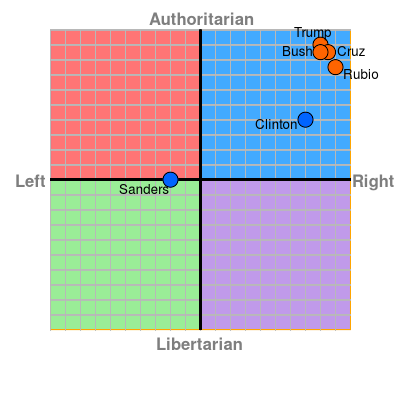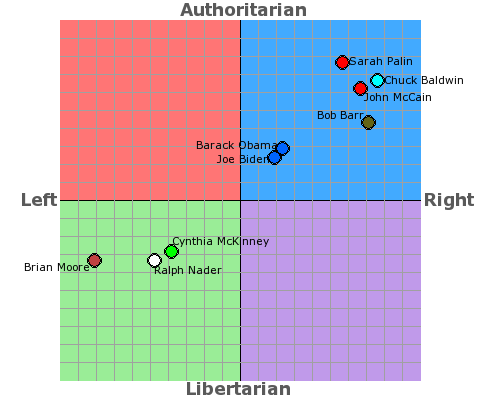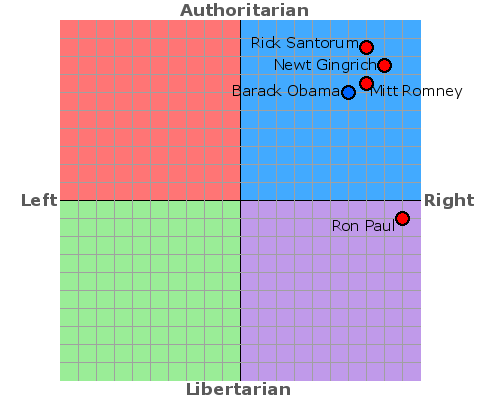Hillary Clinton’s Betrayal of the American Left
Photo by Scott Olson/Getty
It has long been said by disenchanted left-wing people that America has no left wing party—just a right wing and a moderate right wing party. This has been the case for years until recently with the candidacy of Bernie Sanders. One would think liberals would be ecstatic. While many are, once again, the left is cannibalizing itself in the face of opportunity.
I’m just going to say this: Hillary supporters are pessimistic and politically blind. There’s no other way of putting it. They are mostly Baby Boomers, many of whom base their votes on an assumption of Republican narrative dominance that has been for years since the realignment of the south, but no longer exists. For the sake of electability they are afraid of embracing ideas they think are “too radical” even though they may agree with them.
But here are five charts from the nonpartisan PoliticalCompass.org which places candidates on a political spectrum based rough estimations of their ideology. Each one should serve as a wake up call about what is actually “too radical.” The X-axis is the economic scale, and the Y-axis is the social scale:

This graph shows where Hillary Clinton and Bernie Sanders fall on a political spectrum in comparison to the GOP. We’ll keep referencing this as we go on, but for now, something very interesting should stand out: Bernie Sanders is closer to the middle—the objective political center—than any other candidate running.
Now here’s 2008 primary election:

Both Hillary and Obama ran to the left of Hillary Clinton in 2016, and much closer to Sanders now. Even John McCain ran to the left of her. But, this is a primary, following 8 years of the unpopular George W. Bush, and even then, Obama had to shift to the middle during the general. So let’s also look at that graph:

If this graph proves anything, it’s that the Democrats can get elected running on a more liberal platform than Hillary is willing to adopt. Barack Obama definitely did tack to the center from where he was in the primary, but he’s still a far cry from his rival, John McCain. Bob Barr is almost identically placed with Hillary 2016.
Now we’ll compare to 2012:
-

-

-

-

-

-

-

-

-

-

-

-

-

-

-

-

-

-

-

-

-

-

-

-

-

-

-

-

-

-

-

-

-

-

-

-

-

-

-

-










































